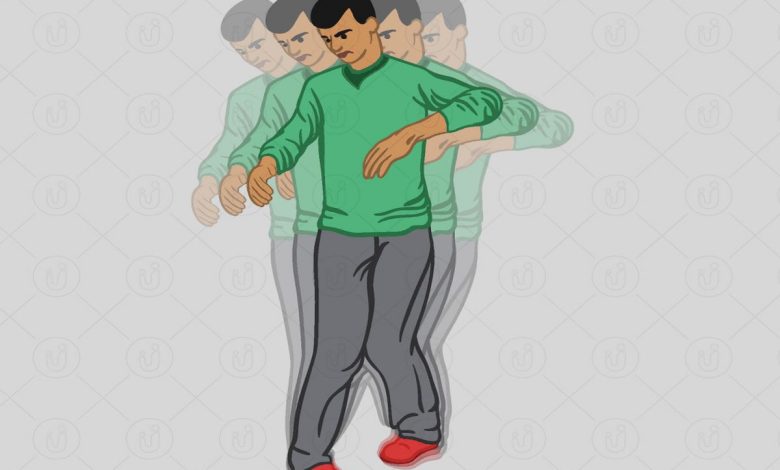Ataxia, dystaxia: what is this, causes, symptoms, diagnostics, treatment, prevention

Movement – uncoordinated; Lack of coordination; Loss of coordination; Coordination impairment; Ataxia; Clumsiness; Uncoordinated movement
Ataxia is a state, which affects a person's ability to control their movements, leading to coordination problems, balance and speech. The condition can be caused by a variety of factors and can range from mild to severe.. In this article, we will discuss the reasons, symptoms, diagnostics, treatment, home treatment and prevention of ataxia.
What is ataxia?
Ataxia belongs to a group of neurological disorders, that affect a person's ability to control their movements. This can lead to coordination problems., balance and speech. Ataxia can affect both children, as well as adults, and the severity of the condition can vary greatly from person to person. There are several different types of ataxia, including cerebellar ataxia, affecting the cerebellum (part of the brain, traffic control), and sensory ataxia, affecting the nerves, traffic control.
Causes of ataxia
There are many different causes of ataxia., and the specific cause may vary depending on the type of ataxia the person has. Some common causes of ataxia include:
- Trauma to the brain or spinal cord
- Infection, such as meningitis or encephalitis
- Tumors or other growths in the brain or spinal cord
- Genetic disorders, such as Friedreich's ataxia
- Vitamin deficiencies, eg vitamin E deficiency
- Autoimmune diseases, such as multiple sclerosis
- Alcoholism
- Side effects of the drug
- Stroke
Symptoms of ataxia
The symptoms of ataxia can vary depending on the specific type of ataxia a person has., as well as the severity of the condition. Some common symptoms of ataxia include:
- Difficulties with movement coordination
- Loss of balance and difficulty walking
- Gibberish
- Tremor or muscle spasms
- Difficulty with fine motor tasks, such as writing or buttoning clothes
- Double vision or other vision problems
- Dizziness
Diagnosis of ataxia
Ataxia is usually diagnosed by a neurologist, who will conduct a physical exam and ask about the person's symptoms and medical history.
The neurologist may also order these tests., like an MRI, CT or EEG, to help diagnose the condition. In some cases, a genetic test may be done to confirm the diagnosis of a genetic disorder..
Treatment of ataxias
Treatment for ataxia will depend on the specific type of ataxia the person has., as well as from the underlying cause of the condition. Some common treatment options include:
- Physiotherapy: it can help improve coordination and balance, as well as reduce muscle spasms and tremors.
- Speech Therapy: it may help improve speech and communication in people with ataxia.
- Medicines: there are several different medicines, which can be used to treat ataxia, including cerebellar ataxia and sensory ataxia. Some common medications include anticonvulsants, muscle relaxants and cerebellar ataxia.
- Surgery: in some cases, surgery may be required to remove a tumor or other growth in the brain or spinal cord.
home treatment for ataxia
There are some things, things people with ataxia can do at home, to help manage your condition. Some tips include:
- Doing exercises to improve coordination and balance.
- Use of assistive devices, such as a cane or walker, to facilitate movement.
- Wearing comfortable shoes, to reduce the risk of falls.
- Refusal of alcohol and other substances, which can affect coordination and balance.
- Planning trips and other daily activities, to make them as safe and comfortable as possible
Prevention of ataxias
Preventing ataxia can be challenging, since this condition can be caused by many factors. Nonetheless, there are some things, what people can do, to reduce the risk of developing ataxia, eg:
- Regular checkups: regular check-ups with a doctor can help identify any potential health problems, which can lead to ataxia.
- Eating a Healthy Diet. Eating a diet high in vitamins and minerals, especially vitamin E, may help reduce the risk of ataxia, caused by vitamin deficiency.
- Avoiding alcohol and drugs. Excessive alcohol and drug use may increase the risk of ataxia, so it's best to avoid these substances altogether.
- Wearing helmets: wearing helmets when playing sports or other activities, associated with the risk of head injury, may help reduce the risk of ataxia, caused by traumatic brain injury.
- Chronic disease monitoring. If you have chronic disease, like multiple sclerosis, it is important to work closely with the doctor, to manage your condition and prevent complications.
In conclusion, ataxia is a neurological disorder, which affects movement, coordination, balance and speech. There are different types of ataxia, and it can be caused by several factors, such as trauma, infection, tumor, genetic disorders, vitamin deficiency, autoimmune diseases, alcoholism, drug side effects and stroke. Treatment options include physical therapy, speech therapy, medicines and, in some cases, surgical intervention. Patients can do exercises at home to improve coordination and balance, use assistive devices, wear comfortable shoes and avoid alcohol and other substances.
Regular check-ups may be helpful to prevent ataxia., healthy eating, abstaining from alcohol and drugs, helmet wearing and chronic disease monitoring.
Used sources and literature
Jankovic J, Just AE. Diagnosis and assessment of Parkinson disease and other movement disorders. In: Jankovic J, Mazziotta JC, Pomeroy SL, Newman NJ, eds. Bradley and Daroff’s Neurology in Clinical Practice. 8th ed. Philadelphia, PA: Elsevier; 2022:chap 24.
Okun MS, Just AE. Other movement disorders. In: Goldman L, Schafer AI, eds. Goldman-Cecil Medicine. 26th ed. Philadelphia, PA: Elsevier; 2020:chap 382.
